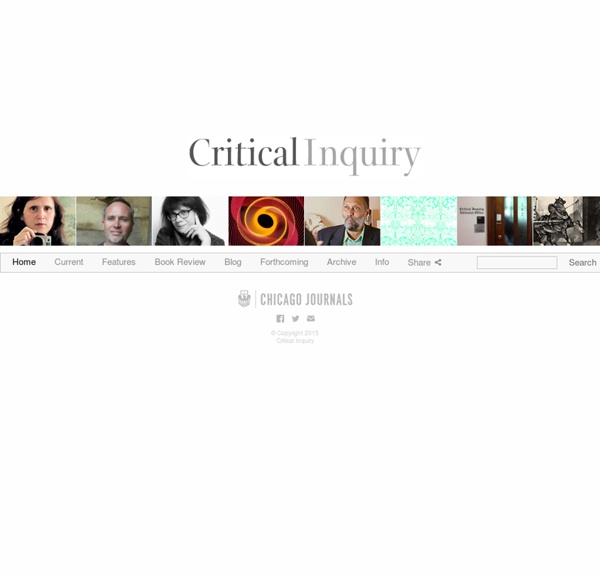



The Manly P. Hall Archive Film Quarterly The Gnosis Archive: Resources on Gnosticism and Gnostic Tradition What is Gnosticism? Many visitors have requested some basic introductory material explaining Gnosticism. To meet this need we offer these "places to start": two short articles, The Gnostic World View: A Brief Summary of Gnosticism and What is a Gnostic?; and an audio lectures (mp3 format) on the Gnostic concept of Christ: The Misunderstood Redeemer. A reading of the Overview of the Gnostic Society Library collection will also give a useful brief introduction to the history and textual legacy of the Gnostic tradition. Meditations Take a moment to reflect on a brief meditation and reading from the Gnostic scriptures, selected from this week's Gnostic liturgy. The Gnostic Society Library Visit the Gnostic Society Library, a comprehensive library of Gnostic scriptures, which includies the complete Nag Hammadi library of Gnostic texts and other ancient writings and documents relating to Gnostic tradition. Documentary films: Nag Hammadi Library collection updated: Gnosis and C. "C.G. C. C.
Immersion - 17/2/2008 - montage AV Robin Curtis / Christiane VossFielding und die movie-ride-Ästhetik: Vom Realismus zur Kinesis (PDF 218 kB) Raymond FieldingDie Hale’s Tours: Ultrarealismus im Film vor 1910 (PDF 875 kB) Erkki HuhtamoUnterwegs in der Kapsel: Simulatoren und das Bedürfnis nach totaler Immersion (PDF 154 kB) Christiane VossFiktionale Immersion (PDF 120 kB) Robin CurtisImmersion und Einfühlung: Zwischen Repräsentationalität und Materialität bewegter Bilder (PDF 167 kB) Ute HollImmersion oder Alteration: Tony Conrads Flickerfilm (PDF 176 kB) Ann-Sophie LehmannIn der Ratte. Britta NeitzelFacetten räumlicher Immersion in technischen Medien (PDF 142 kB) Werner Wirth / Matthias HoferPräsenzerleben. Joachim PaechNachruf auf Jan Marie Lambert Peters (1920—2008) (PDF 77 kB) Theorien ästhetischer Immersion Formal betrachtet ist ‹Immersion› zunächst eine Kategorie der Wirkung von etwas, das Aufmerksamkeitswert beansprucht, auf jemanden, der sich auf dieses Etwas konzentriert und einlässt. Robin Curtis und Christiane Voss
Tractatus Logico-Philosophicus - Tabular view Thus the variable name 'x' is the proper sign for the pseudo-concept object. Wherever the word 'object' ('thing', etc.) is correctly used, it is expressed in conceptual notation by a variable name. For example, in the proposition, 'There are 2 objects which. A formal concept is given immediately any object falling under it is given. If we want to express in conceptual notation the general proposition, 'b is a successor of a', then we require an expression for the general term of the series of forms 'aRb', '(d : c) : aRx . xRb', '(d x,y) : aRx . xRy . yRb', ... , In order to express the general term of a series of forms, we must use a variable, because the concept 'term of that series of forms' is a formal concept. To ask whether a formal concept exists is nonsensical.
PhiloSURFical | Home First Flight : Knowledge Media Institute : The Open University Air flows over and under the wings of an aeroplane as it moves. The wings are designed to make the air travelling over the top surface move faster than the air moving under the wing, and this has the effect of lifting the wing up. The shape of a wing viewed from the side is known as an aerofoil (or airfoil), and the angle between the aerofoil and the direction in which the plane is moving is described as the angle of attack. Changing the angle of attack alters the amount of lift produced by the wing and can also affect the pilot's control of the plane. Wright Brothers test glider of 1900 after an accident The next section is concerned with the way that air moves around an aerofoil, and what happens when it stops flowing smoothly more...
EUCLID | EdUcational Curriculum for the usage of LInked Data skill-based scouting of open management content PhiloSURFical | Home Tractatus Logico-Philosophicus Side-by-Side-by-Side Edition Created in part to serve a pedagogical need, I have undertaken a project to create a decently typeset version of Wittgenstein’s Tractatus-Logico-Philosophicus (1922) that presents Wittgenstein’s German original text alongside both major English translations: the Ogden (or Ogden/Ramsey) translation, and the Pears/McGuinness translation. Right now four versions are available in three file formats. All contain Russell’s introduction, and a hyperlinked English index. (The index is taken from the Pears and McGuinness edition). They were created by cleaning up and checking versions of the text found elsewhere on Public Domain sites online to create LATEX source which was then converted to other formats. PDF (portable document format) Created with pdfLATEX (the source is also available below). HTML (web page) Two layouts of HTML (XHTML) are available. ePub (Open eBook publication) Future goals for the project: If you would like to volunteer to help with any of these, let me know!
The Authority Smashing! Hour Great Books and Classics - Welcome The Zeitgeist Movement